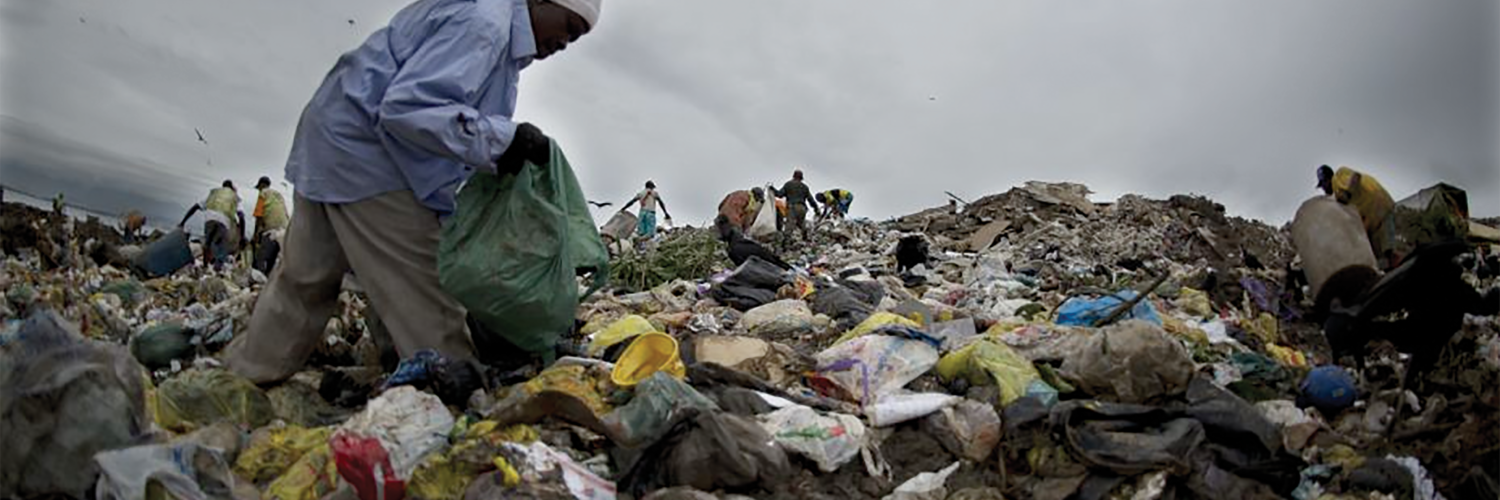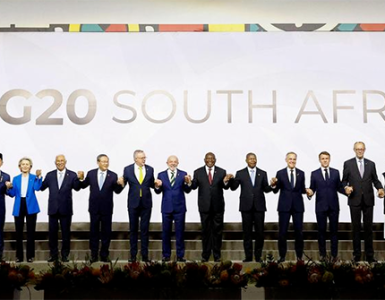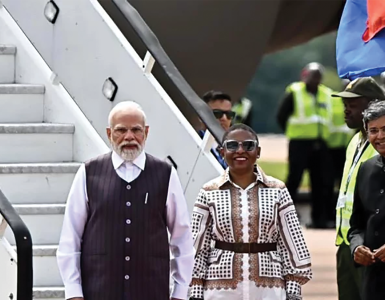MICROCOSM: No rocket science needed to decipher that SA’s rampant unemployment levels, poverty, famine have reached epidemic proportions…
I am haunted by the spectre of famine stalking through the length and breadth of this country. I am not talking about poverty and hunger. Most of our people know about this throughout our history of colonial oppression under apartheid, and, sadly, even under the African National Congress government.
But when you see ordinary black people scavenging for food; clothing and recyclable materials near one of South Africa’s most developed cities – Durban, then, this can no longer be considered ordinary hunger and poverty. This is an unfolding calamity because the scenes I saw in Durban this week are but a microcosm of what is happening throughout the country.
For those who might have not seen on TV what I am talking about, let me state briefly: early this week some residents were protesting against the decision by the eThekwini council to prevent them from scavenging for discarded food, clothing and recyclable materials at a council owned landfill.
This is a crying shame that this is happening under an ANC government, which has been in office for 29 years. The greater shame is that what played out in Durban this week is happening in many parts of South Africa.
The only difference is that, in Durban, this incident was beamed into our houses by TV Networks after one of the scavengers was shot dead by security officials and the community decided to protest against this killing.
What I found most galling about this tragic incident is the callous manner that eThekwini Mayor Mxolisi Kaunda displayed towards those protesting against the killing and the city’s decision to close the landfill. Kaunda was totally unsympathetic to the people.
His language had all the echoes of the apartheid-era officials.
Kaunda made it clear that the landfill was going to be closed or, to borrow from colloquial parlance, finish and klaar. The council was not going to tolerate any protests.
One young woman among the protesters delivered what must rank as one of the harshest criticisms made against the ANC government. She asked, “Is our sin (to be treated so callously) being poor?” This must pierce even the most thick-skinned ANC leader On the face of it, some of the reasons advanced by the mayor sound reasonable. If left unguarded, the landfill could be a hiding place for some criminal elements. Eating the discarded food from this place does, indeed, pose a serious threat to the health and wellbeing of the desperate consumers. No doubt about that.
I saw the men and women who were protesting against the closure of this site. They looked like decent folk to me, and I believed them when they told the mayor that they are no criminals. To me the real surprise was that such decent-looking and neatly dressed people are in such dire straits they are forced to scavenge for food.
This is a serious indictment against the ANC government. Why should our people continue to suffer such unacceptable indignities. If our people are scavenging for food in places such as Durban – and I have seen on TV similar accounts in places such as Gqeberha – I think we are in a far deeper crisis than we can imagine.
A few weeks ago, there was a national outrage when the KwaZulu Natal government terminated a contract of someone who was providing a feeding scheme to school children in the province. It was pointed out that for many children, the scheme provided the only meal they had for the day. To its credit, government quickly resolved the issue.
As I indicated in one of my previous columns, I have seen an emerging tragedy in the Free State. Coming down southwards into the Free State from Vereeniging, I think it is about 90 minutes along the R707, one comes into a little dorpie called Lindley and its satellite township of Ntha. Nothing remarkable about Ntha, except that 20 years ago travellers would not see it, but for a sign post. Today ramshackle dwellings are virtually on the R707.
The new residents are, I believe, people who were once farm labourers but are now discarded as a redundant work force. Ntha is now a bleak, desolate place. How people eke out a living in such a place, only God knows. I believe Ntha is a microcosm of many such places all over South Africa.
In such places there is hardly any prospect of unemployment and disease is rampant. Having last seen Ntha about two years ago, and watched the desperation of brothers and sisters in Durban this week, I was forced to revisit that haunting book by Father Cosmas Desmond, “The discarded people “. It is a book that tormented my soul for years. The book, which predictably was banned by the apartheid government, highlighted the plight of black people who were forcibly removed all over South Africa from farms and urban areas and resettled in places no different from today’s Ntha.
People living in the cities are fortunate that TV can beam their plight to millions of households in South Africa, and perhaps shake the conscience of our people. How many are aware of the real tragedy facing those in rural and farming communities.
Unless there is urgent government intervention, the horrors of Limehill in present-day Northern KwaZulu-Natal and Mnxesha in the Eastern Cape, near King Williamstown, so vividly captured by Father Desmond, will pale into insignificance.
Let me declare: my observations and fears are not scientific. They are mere observations. Only sociologists, political scientists and economists can give us a more research-based picture. But I have no doubt they will come to the same conclusion. The rampant levels of unemployment, poverty and famine have reached epidemic proportions.
- Sello is a retired senior editor who worked for several mainstream papers
INTERRACIAL RELATIONSHIPS AND STEREOTYPES
ATTITUDES: One study found that white people with best friends who are Black still expressed racist sentiments…
By WSAM Reporter
The landmark United States Supreme Court ruling in Loving vs Commonwealth of Virginia abolished bans on interracial marriage in the United States in 1967, but a new academic paper from Rice University and Texas A&M University said an uptick in interracial relationships since then has not ended discriminatory tendencies, even among individuals who are in these romantic partnerships.
The paper, “Mixing races, maintaining racism? Considering the connection between interracial families, social distance and racial inequality,” is online and will appear in an upcoming edition of the Journal of Family Theory and Review. Researchers Jenifer Bratter, a professor of sociology at Rice, and Mary Campbell, a professor of sociology at Texas A&M University, examined existing research on close interracial relationships to see how these friendships and/or romances impacted overall attitudes about race and inequality.
“There are a lot of assumptions that people who enter into intimate interracial relations, at a minimum, do not hold stereotypes that would prevent them from dating or marrying someone of a different race,” Bratter said. “However, current research just doesn’t support this assumption.”
For example, the researchers note that one study finds that white people with best friends who are Black still express anti-Black racism, sometimes describing their friend as an “exception” to their beliefs about the larger group. And some of these close interracial relationships are sustained by avoiding any discussion of race or racial inequality, survey respondents reported.
Research on racial preferences in online dating shows that some daters use race as a limiting factor for identifying potential partners. For those who are open to interracial dating, research shows that they may still express preferences that align with existing racial stereotypes.
And Bratter and Campbell wrote that interracial marriage is not an indicator of openness among extended family members — quite the opposite, in fact.
“Some presume their presence will normalise interracial contact, undermine the racism of the extended family members who encounter the couples and increase positive social contact between the different racial groups,” Campbell said. “Unfortunately, evidence from the experiences of interracial couples suggests this is not always the case.”
In addition to facing greater criticism from peers and extended families, Bratter said that these individuals in interracial marriages also reported receiving less support from their families when compared to couples in same-race marriages — even when grandchildren were involved.
“This was especially true for white mothers of biracial children,” Bratter said. “This suggests that extended family members, on average, are not as involved in the lives of interracial couples.” And the stresses these couples face are compounded among those with low socioeconomic status, she said.
Bratter and Campbell said that the research reviewed in their study does not support the assumption that interracial relationships reduce racism.
So what can be done to improve the relationships between interracial couples and their families? The scholars said more research must be done, but designing interventions that help build support within and beyond families is a good place to start.
“We hope future research will address how to foster more open conversation and dialogue among extended family members,” Bratter said. “This really has the potential to expand support and could go a long way in addressing the underlying vulnerability faced by many multiracial families.”





























